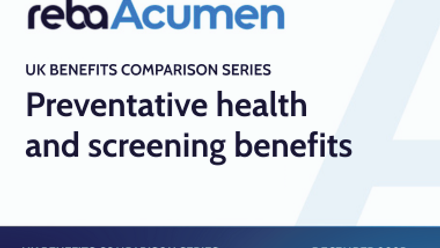What to do before poor mental health forces Gen Z out
The fact that mental health remains a challenge for employers and employees is not news.
However, the disproportionate impact on younger people represents a significant business and economic risk.
Gallagher's annual Workforce Trends Report, shows that competition for skilled resources was the second largest pressure on pay, behind only the cost of living.
As part of the work launching the UK’s “Keep Britain Working” review, it was revealed that 530,000 more people between 16 and 34 are experiencing a work-limiting mental health condition in 2024 than in 2015.
Combine these things, and you understand that finding good people is difficult and increasingly expensive.
Avoiding losing younger people from your company or the workforce as a result of mental health difficulties must be a priority.
We all have our own level of mental health, and while for some there is a clinical element, for many it’s a periodic episode that can be supported and managed.
That’s crucial, because from an employment perspective, the longer people are off work, the less likely they are to return.
It should also be noted that there is an increased chance of people quitting after they return to work, so continued support is crucial.
But what can you do?
The first step is to recognise the issue.
While there are significant external factors impacting mental health that no employer can reasonably impact, many of the best interventions and pathways to supporting mental health in the workplace are within an employer’s gift.
Much of this is not revolutionary.
Early intervention. Clear communication around the availability of support. Training and resources for line managers.
It all comes under the sensible approach of ensuring people understand what is available and how to access it, supporting explicit mental health support in the workplace and facilitating access to treatment.
As is always the case with wellbeing in general, a more holistic, connected approach matters.
This was another key takeaway from our research, so again, adopting a more objective-centric wellbeing approach leads to improved outcomes in myriad ways.
To give just one example, research from Mind shows that money worries are connected to mental health challenges like anxiety, sleep issues, and feelings of loneliness and isolation.
At the same time, research from the Money and Mental Health Policy Institute shows that those with mental health challenges are more likely to suffer money worries.
If we focus on this issue as an example, considering your benefits and their design through a wellbeing framework can help.
Money worries
Worrying about money disproportionately impacts younger people.
How is your benefit design supporting that? Do you exclusively support saving for retirement?
That’s decades away for young people. They are far less likely to have a sufficient emergency fund in place when compared to their older colleagues, so what are you doing to help with that?
Consider this. Do you allow the highest – likely older - earners to redirect their employer pension budget towards non-pension savings for tax efficiency purposes?
Probably.
Your benefit design supports their financial objective of being more tax efficient.
Do you allow younger people the same flexibility to use that existing budget for non-pension savings which could assist with debt or buying a house?
That’s just one example where considering the design and provision within existing frameworks could support areas which could be causing anxiety.
There are many others, including speaking to your people.
Employee representative groups (ERGs) can offer insight into the lived experience of cohorts.
They can show where small changes in provision or benefit design could help.
They also offer fantastic engagement channels.
You may likely be offering things that can help, but people are unaware.
Nothing is worse than hearing ‘I didn’t know we had that’ about any benefit. ERGs can offer direct messaging.
Consider how and where your benefits are communicated.
Will a multi-generational workforce respond to a homogenous comms plan?
Because regardless of the cause, getting people help is what really matters.
Episodic mental health provision in the workplace often falls on employee assistance programmes:
- What level of service do you offer?
- Can it transition from ‘in the moment’ support to clinical help?
- What does that journey look like for the employee?
- Are they likely to simply be told ‘we cannot do that for you’ and left to look for support elsewhere?
- Do you even offer that additional support?
And early intervention is key. You may have access to help from medical insurance providers or your income protection insurance with case management.
They are both highly incentivised to stop issues escalating and these are hugely under-utilised resources. Check your provision.
Mental health is a people risk. You can put in place insurance policies to help mitigate that.
By adopting a ‘wellbeing approach’, being open to listen and support the needs of younger people, you can make a difference.
Supplied by REBA Associate Member, Gallagher
Gallagher is a global, integrated HR consulting, benefits administration & technology services provider.








